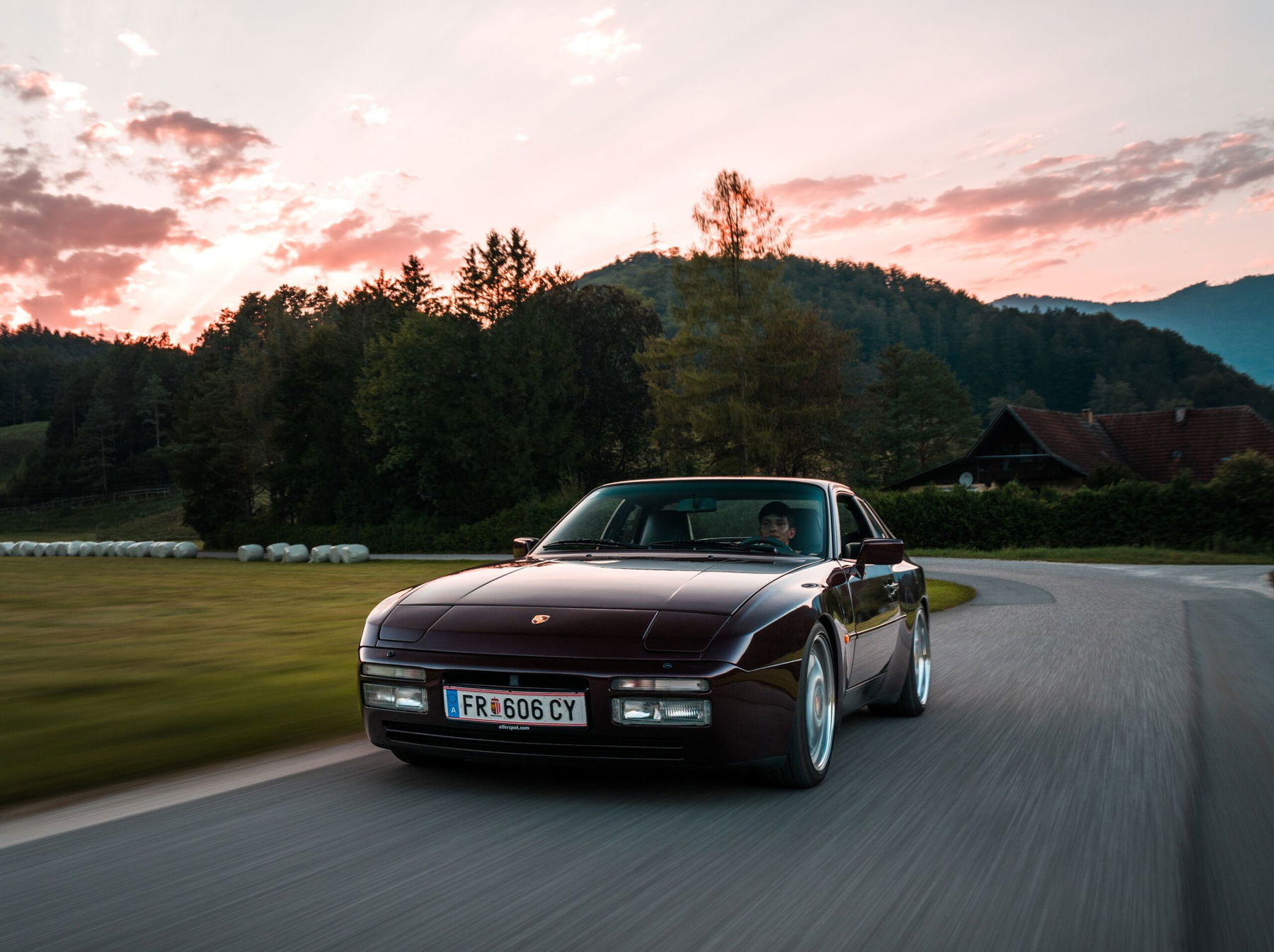
Porsche’s reorientation at the end of the 1970s broke with many traditions. Away from the rear or mid-engine in boxer configuration, towards the water-cooled front engine with transaxle transmission. The 944 produced from 1981 onwards received a final, extensive update for the 1989 model year. In addition to the revised 944 Turbo model, the Stuttgart-based company brought out a real gem with the Porsche 944 S2. In our Porsche 944 S2 buyer’s guide, we tell you exactly why these models are so popular over 30 years later and which problem areas you should look out for when viewing them!
1988 marked a turning point for Porsche’s transaxle lineup. The 924 was finally phased out, so the Porsche 944 series became the Zuffenhausen-based company’s entry-level model from the summer. On the one hand, Porsche revised the base 944 and gave it a four-cylinder engine with an increased displacement of 2.7 liters. But the more exciting innovation was the successor to the 944 S – the Porsche 944 S2.
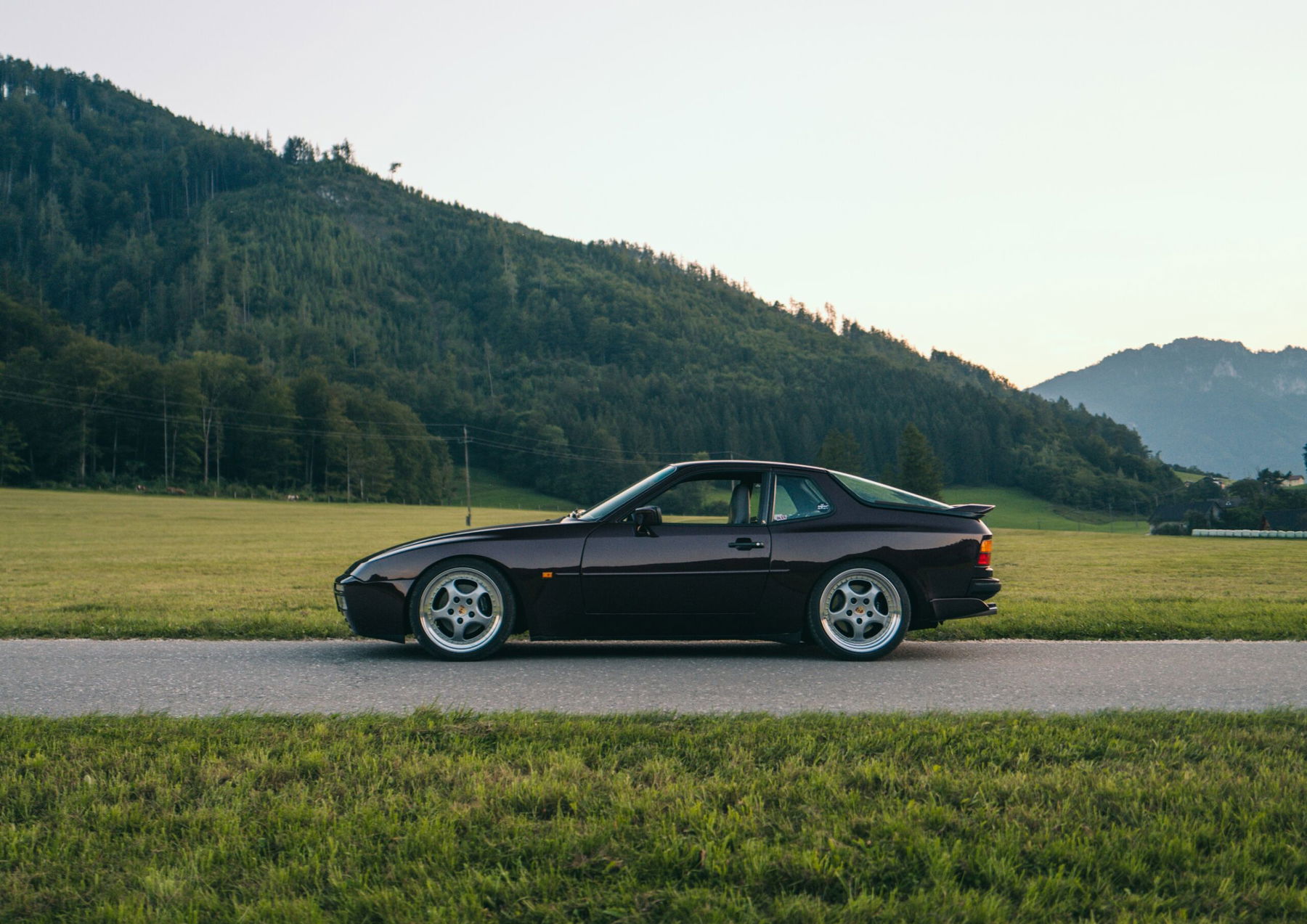
Porsche killed two birds with one stone with the 944 S2. The body, including the front end, was taken from the Turbo. This meant that from model year 1990, only the wide body was available, which probably saved some money in production. At the same time, S2 buyers were delighted with the more muscular appearance. The Porsche 944 S2 also scored points with a newly developed 3.0 liter naturally aspirated engine with four-valve technology called M44/41. This four-cylinder petrol engine, the largest in series production at the time, largely anticipated the power unit of its successor, the 968.
With the Porsche 944 S2, there was finally a transaxle model with an open roof! Before the 944 S2 Cabrio, there was no convertible version of the 924, 944 or 928. However, the production process was complex. Porsche delivered 944 S2 Coupé bodyshells to the American Sunroof Corporation in Weinsberg, 45 minutes away from Zuffenhausen. There, the roof was cut off and a second floor panel welded in before the bodies were brought back to the Porsche factory.
The Porsche 944 S2 was the first transaxle convertible to come from Zuffenhausen. © Centre Porsche Lorient
Like the other transaxle models, the Porsche 944 S2 has no conceptual rust problem. Nevertheless, these vehicles will soon be 40 years old. For this reason, increased attention must be paid to the body and underbody check. Windshield frames, sills, doors and the storage compartments behind the rear wheels known as Bohlmann pockets need attention.
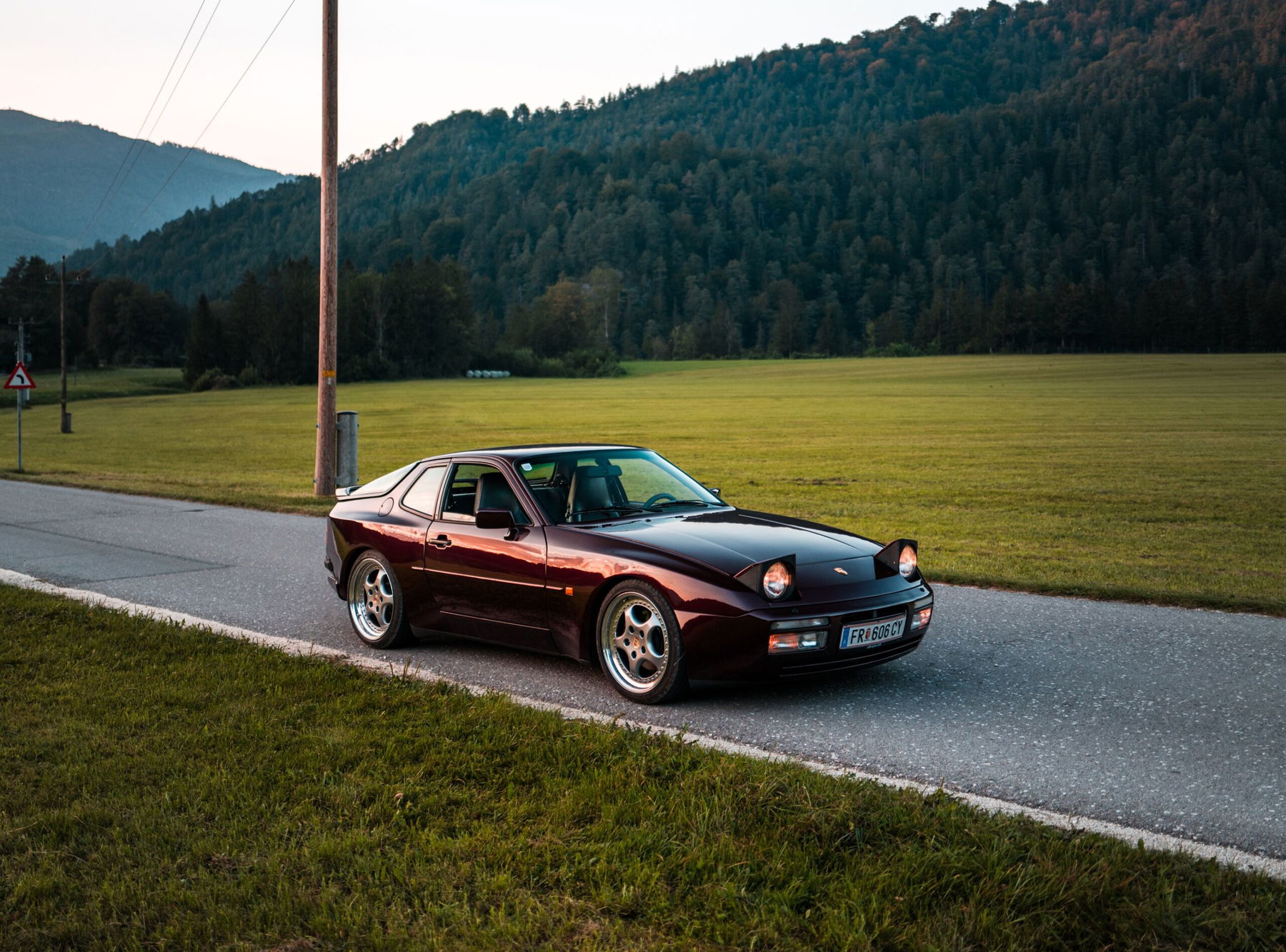
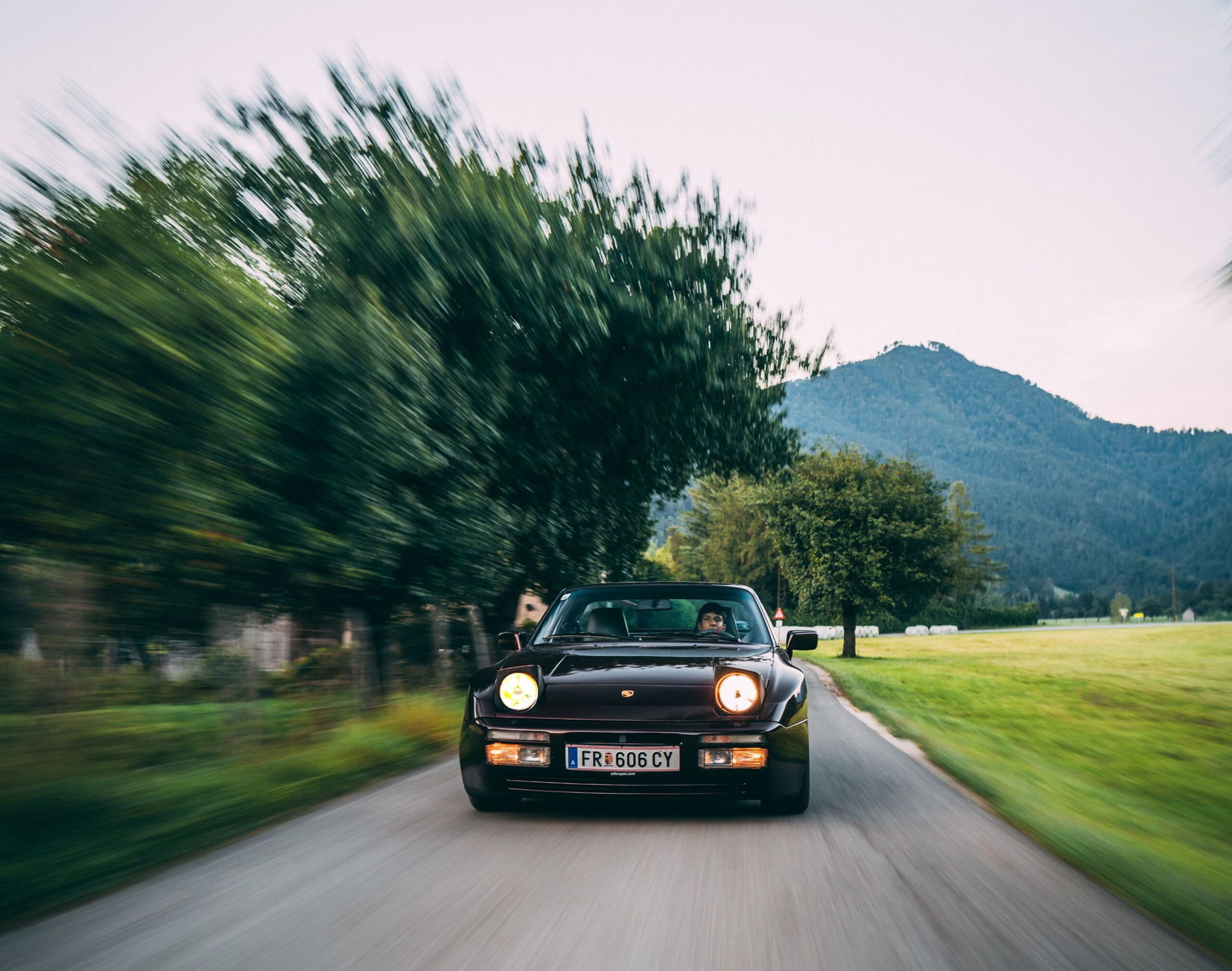
The sills in particular provide information about the vehicle of choice’s previous life. Incorrectly positioned jacks immediately leave traces and subsequently rust pockets. If the zinc coating breaks open due to deformation, moisture can penetrate the sheet metal and cause rust.
The front bumper and rear diffuser are made of plastic. Although this makes them immune to rust, they can become cracked due to parking bumps and stone chips. Additionally, the hood and the bumper itself are generally very susceptible to stone chips and have already been repainted on many vehicles, especially those with higher mileages.
A typical problem area of the Porsche 944 S2 is the removable targa roof. On the one hand, the seals are often brittle and allow water to enter. The detached rubber particles can then block the four drains, causing water to stand in the frame or, in the worst case, to leak inwards. There are further, larger drains on both sides of the engine compartment at the base of the A-pillar. These must also be checked regularly. If they are blocked, water can spill into the interior through its ventilation system.

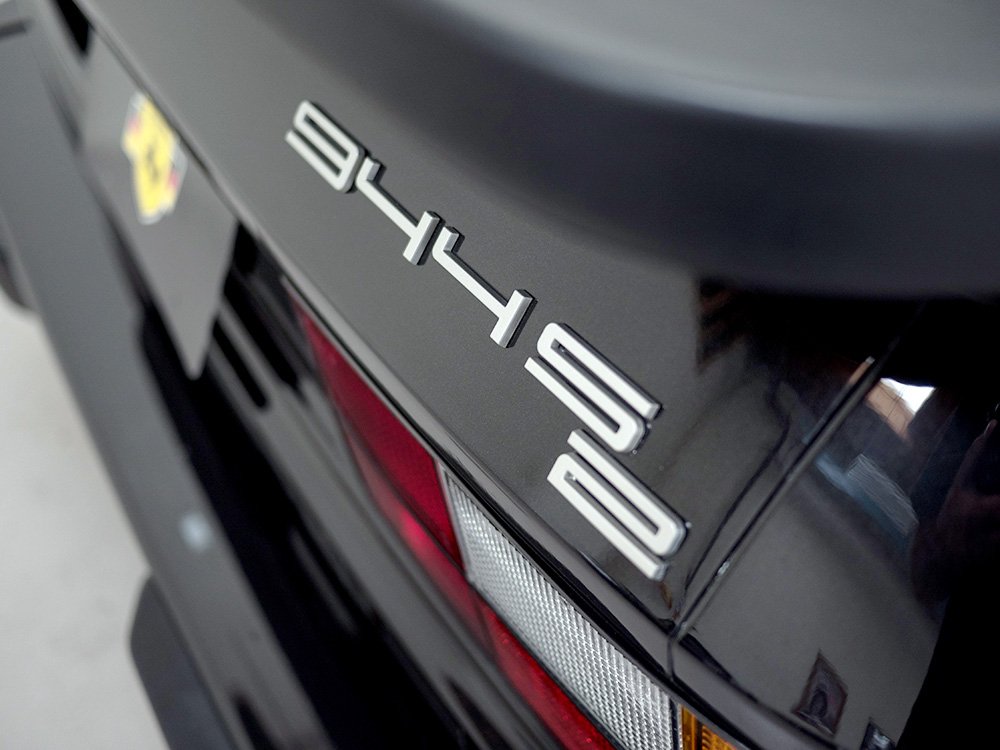
However, the roof’s lifting mechanics also have their pitfalls. The plastic gear wheels of the drive are also subject to natural aging processes. If they break, the roof will neither move up nor down. Replacing them is time-consuming and requires a sure instinct. If the motor no longer makes a sound at all, the microswitch may also be defective.
The large glass dome in the rear of the transaxle models can also be responsible for water ingress. It’s glued together with its frame. Exposure to heat and UV radiation causes the adhesive to loosen over the years. Moisture can enter the interior through small gaps between the windshield frame and the windshield itself, especially at the transition to the roof.


As with the doors, the rubber seal around the rear glass dome should be checked as a matter of urgency. It tends to shrink and leaves a gap in the middle above the lock, which is often the cause of exhaust smells in the interior. Incidentally, the rear lights should also be inspected carefully. In many 924 and 944 models, water collects in the lower three lights. If the leak remains unnoticed for too long, the “water level” will be permanently visible on the plastic.
Logically, the Porsche 944 S2 Cabriolet does not have a large glass dome as a rear window. First of all, the soft top should be checked for external damage. This applies to both the fabric and the plastic rear window. The optional electric soft top feeder should also be checked for function during the inspection. A complete convertible top costs from 1,500 euros to replace – depending on color and availability – plus installation. Apart from this, the convertible has no specific problems.
© CarJager
The oval dashboard introduced with the 1985 model update was also used in the Porsche 944 S2 and is known to crack with age. With a little manual skill, the cracks can be repaired, but removal and repair are quite time-consuming. Worn leather or broken seams on the leather steering wheel and gear knob are also not uncommon. The seats themselves are comfortable and their upholstery is good for several hundred thousand kilometers, but the covers can chafe and replacements quickly become expensive.
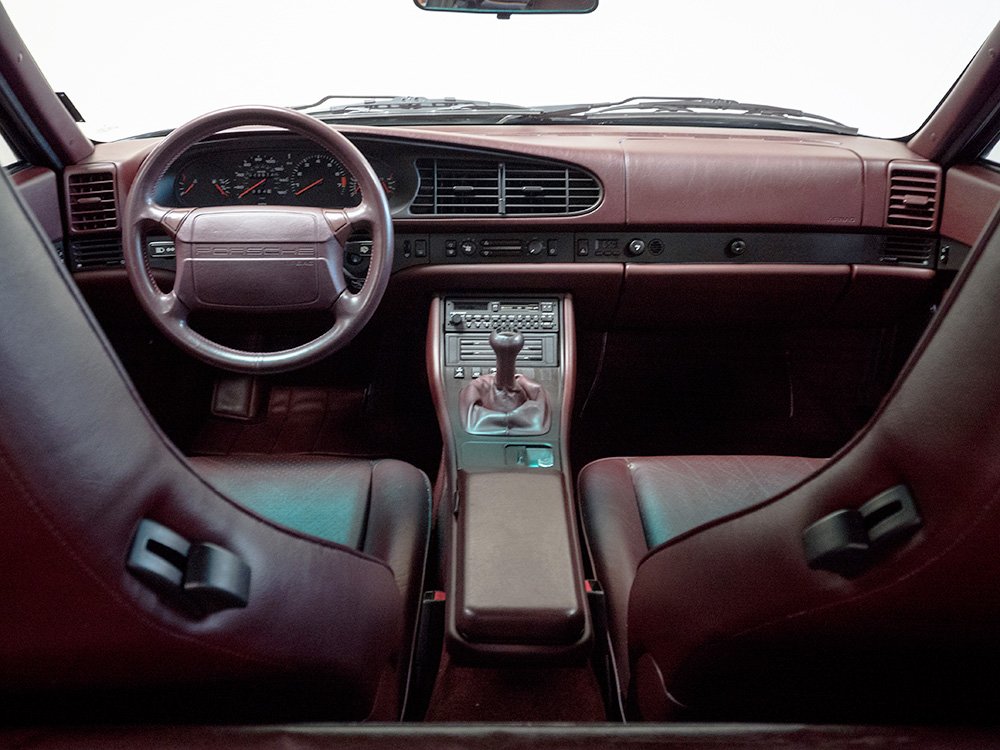
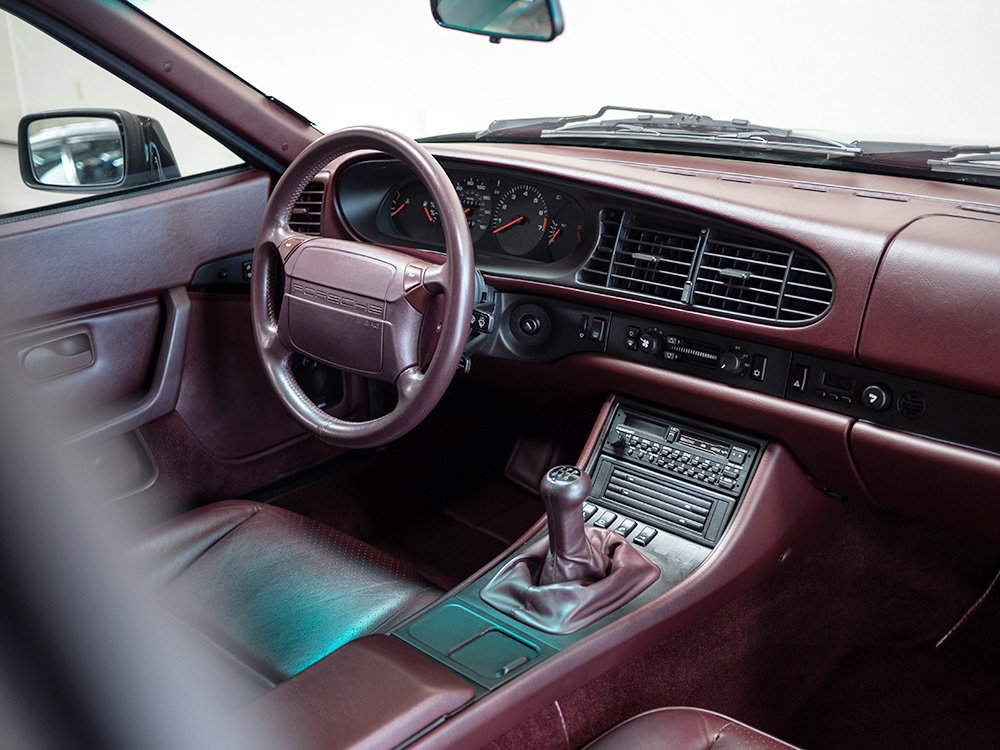
We recommend checking the carpets for moisture and lifting up the mat in the trunk completely. This will quickly reveal whether moisture has penetrated the interior. Discoloration on the top of the folding rear seat bench can also indicate this. In this context, the headlining should also be inspected carefully. Wavy deformations are an indication of water ingress. In addition, the hinges and latches of the glove compartment and the storage compartment on the center tunnel should be checked for proper function.
Compared to its big brother 928, the Porsche 944 S2 is much less electrically capricious. Nevertheless, all electrical components should be checked for function. This means: electric seat adjustment, central locking, exterior mirrors, interior and exterior lighting, warning lights in the instrument cluster, the targa roof mentioned above, radio and all speakers should be checked piece by piece. With retrofit radios, the wiring harness is often changed instead of using adapters, which can make retrofitting problematic.
Electric windows, ventilation control and even small details such as the digital clock and the cigarette lighter should work. Otherwise there is a risk of time-consuming troubleshooting. © CarJager
If the radio signal is inadequate, it is possible that the wrong windshield has been installed. This is because when the Porsche 944 was revised for the 1985 model year, the shape of the windshield was retained, but the radio antenna was integrated into the windshield. The heating on the rear window of the coupé should also be checked for proper functioning. The ventilation control also requires a functional check. If the optional air conditioning system is not cooling the vehicle down, there can be many reasons for this. From refilling the system to costly parts replacement, there are numerous causes for malfunctions.
If the radio has no signal, it is worth taking a look at the windshield. If the original windshield was mistakenly replaced with one without an integrated antenna, there will be nothing but noise from the speakers.
With the naturally aspirated engine, known internally as the M44/41, Porsche achieved an excellent balancing act between torque from low down and more rev-happiness than the eight-valve-engines. Chief engineer Paul Hensler coaxed a maximum torque of 280 Nm from the 2,990 cm³ four-cylinder engine, which was already available at 4,000 rpm. At 5,800 rpm, an impressive 211 hp was sent to the rear axle. These figures were achieved thanks to a cylinder head with four valves per cylinder, two overhead camshafts, a lighter crankcase and forged pistons. The 944 S2, which was delivered exclusively with a 5-speed manual gearbox, accelerated to 62 mph in a still impressive 6.8 seconds. Propulsion only ends at 149 mph.
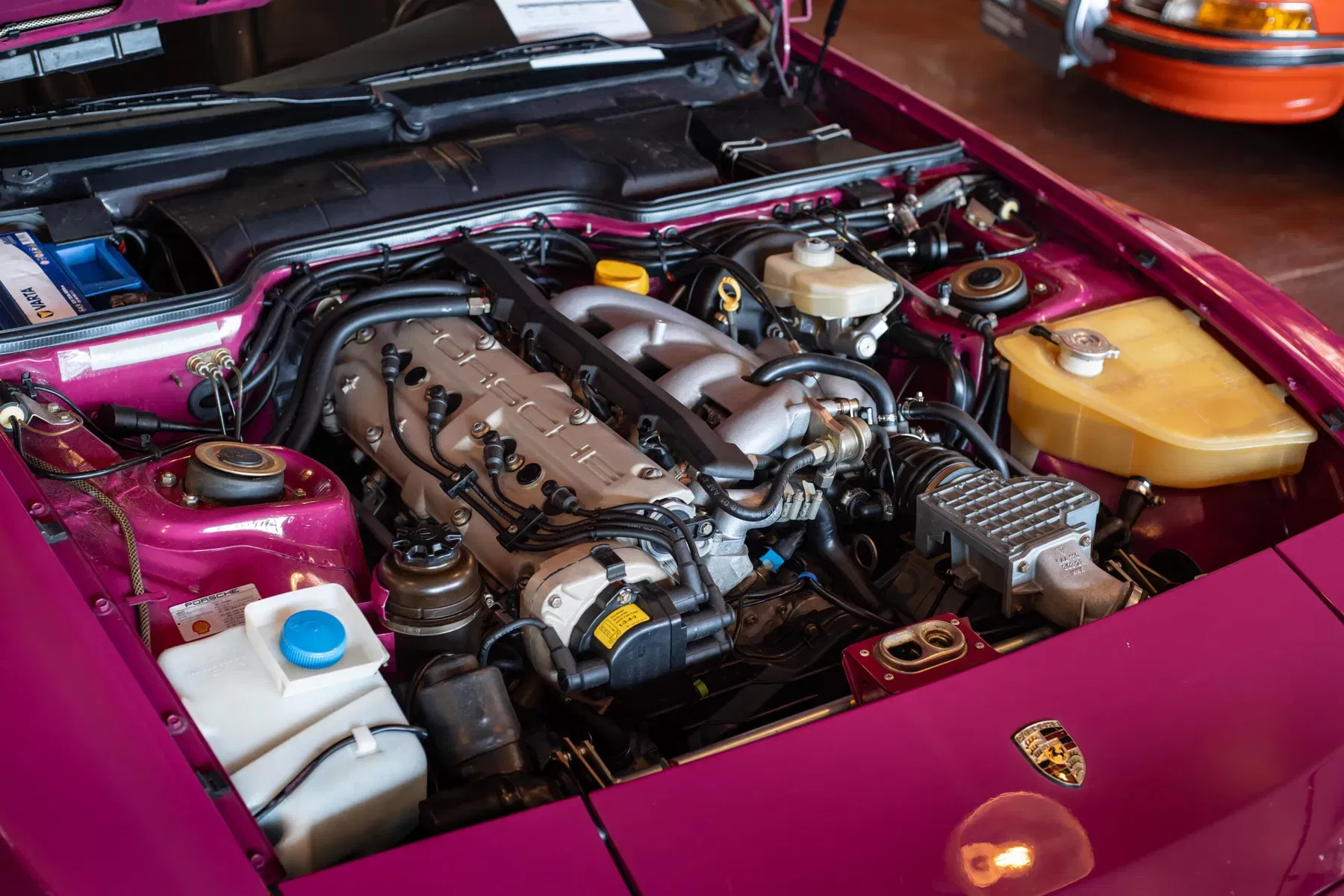
In terms of design, the four-cylinder is a very solid engine. However, like many Porsche models, it also suffers from occasionally leaking main seals. When the engine is warm, the oil pressure should be stable above 2 bar. Otherwise, troubleshooting will be difficult. Regular replacement of the timing belt is also particularly important. This is scheduled every 48,000 miles or after eight years at the latest. If you hear high-frequency noises from the belt drive, the tension is probably too high. It is also advisable to replace the water pump every second time the timing belt is changed.
However, this timing belt only drives the exhaust camshaft. The intake camshaft is driven by the exhaust camshaft via an additional timing chain. Unfortunately, this is also subject to wear. If there is no record of the timing chain and chain tensioner being replaced on the vehicle in question, this should definitely be taken into account when negotiating the price. Because a defect almost certainly means a major engine failure.

A small telescopic mirror and a flashlight are also recommended during the inspection. You should use these to check all around the engine for oil leaks. The valve cover gaskets often sweat, as do the shaft seals on the crankshafts and balancer shafts. Bloated coolant expansion tanks indicate excessive pressure in the cooling system and possibly a defective head gasket. If the engine is otherwise running smoothly, increased engine vibrations are likely due to defective engine mounts.
If the engine mounts mentioned are defective, action should be taken as quickly as possible. This not only leads to unpleasant vibrations, but also means that the engine and transmission are no longer perfectly aligned. This in turn leads to increased wear. The so-called rubber puck is particularly affected by this. This component was used in 944/II models instead of classic torsion springs. Unfortunately, the rubber part has a significantly shorter life span than the clutch plates themselves.
If the rubber puck breaks and, in the worst case, disintegrates, you will no longer be able to drive the car. This is because rubber parts can become wedged in the clutch. A defect is indicated by an audible clicking noise or even noticeable knocks when changing gear. If the clutch pedal requires an unusual amount of force, this is a sign of wear on the friction plate itself.
Porsche used a clutch with a rubber puck for damping in the 944 S2. However, these wear out faster than the clutch itself. It is therefore advisable to change to a clutch with torsion springs when replacing it.
The 5-speed manual gearbox in the 944 S2, on the other hand, is very robust. A spongy shift feel is usually due to a worn shift linkage. Noticeable whining or even grinding noises are rarely caused by the gearbox, but rather by worn bearings in the differential. In any case, the gearbox must be removed. This also applies if the locking effect of the optional limited slip differential is no longer sufficient.
The introduction of a rear anti-roll-bar and 16-inch wheels with 205/55-section tires at the front and 225/50s at the rear optimized the handling for greater stability and comfort on long-distance drives. The sometimes strong rolling movements of the first transaxle models are now a thing of the past. Generally, these components pretty sturdy, with the exception of the original rubber bushes anti-roll-bar mounts. Poly-bushes provide a remedy here, but also reduce ride comfort.
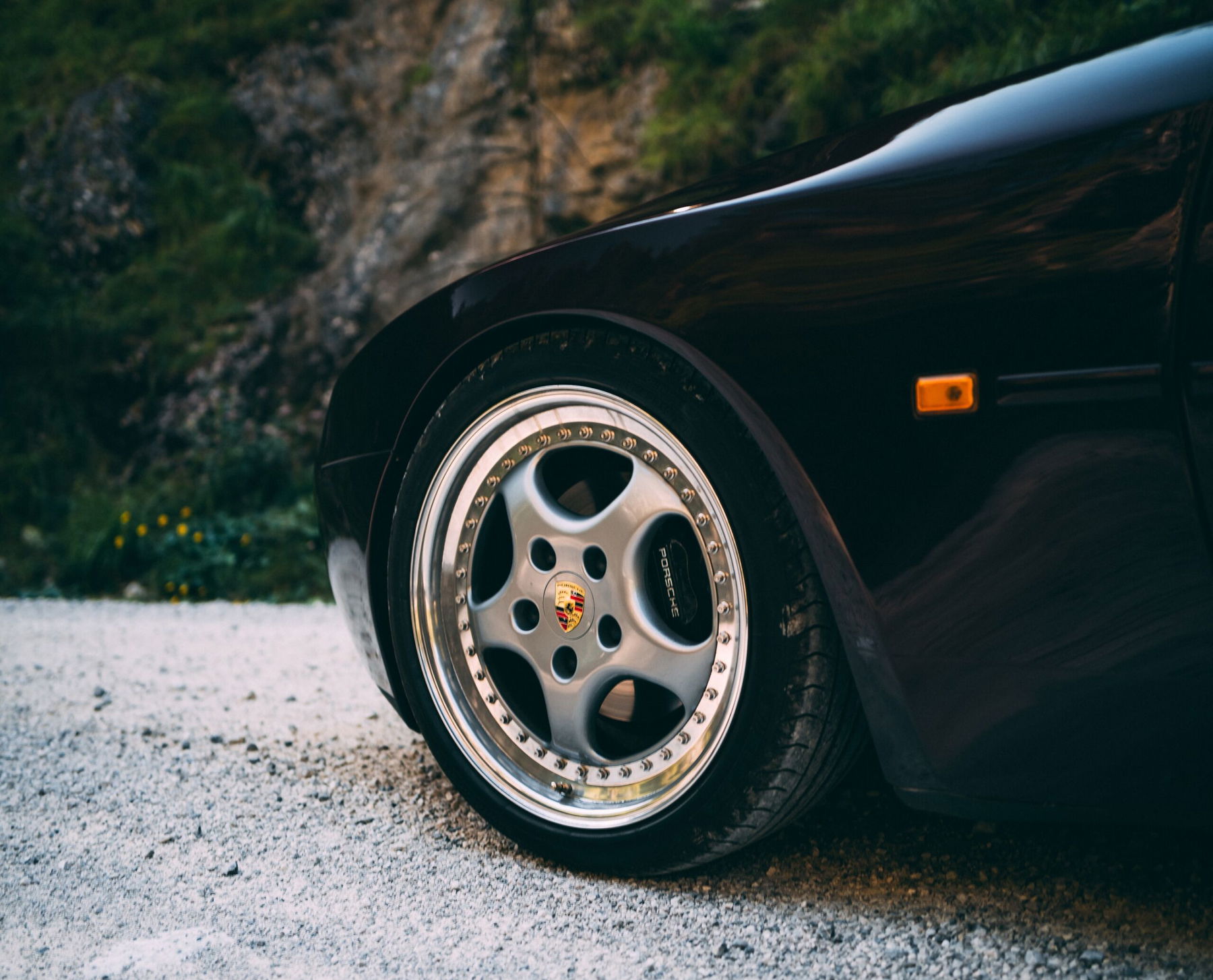
The suspension on the rear axle is provided by a torsion bar. If you want to upgrade your suspension to a modern coilover suspension, you also have to adjust this, which isn’t too easy. In addition, the wishbone bearings on the front axle quickly resent lowering and larger wheels. Otherwise, the tried-and-tested suspension design causes little grief. If a transaxle does not drive smoothly, without knocking noises from the suspension and with little play in the steering, there is almost certainly something wrong.
If a transaxle does not drive smoothly, without knocking noises from the suspension and with little play in the steering, there is almost certainly something wrong.
As an upgrade, the Porsche 944 S2 also featured a stable and powerful four-piston fixed calliper brake system all round, with ABS as standard from model year 1990. As is typical for Porsche, the brakes are well dimensioned and easy to modulate. However, corrosion on the brake lines and porous brake hoses can be a problem at such an advanced age. Wearing parts for the S2 brakes are surprisingly inexpensive. Discs and pads cost less than 200 euros per axle and can be replaced quickly.
Hard to believe, but true: from summer 1989, the 944 S2 was the entry-level model of the Porsche brand. With a base price of DM 78,100 for the coupé, it was almost DM 20,000 below the almost equally fast 944 Turbo and priced a good DM 25,000 below the new Porsche 964 Carrera 2. The top model of this era, the Porsche 928 GT, already cost DM 143,000 at the time. These prices give a certain indication of today’s price structure and possibly also the development in value of the Porsche 944 S2.
© David Fierlinger, Elferspot
Within the model series, the Porsche 944 S2 is probably the most balanced overall package anyway. It is not quite as exciting as the 944 Turbo or Turbo S. But it is not miles away either. The 944 S2 combined everyday practicality, lots of torque low down and handling like no other Porsche before it. The fact that the S2, which was only built from 1988 to 1991, was even extremely economical for a sports car, rounds off the package.
Like most Porsche models that had become affordable in the meantime, the 944 S2 was often driven by its owners as a daily driver. Despite their relatively small production numbers – 9,352 coupés and 6,980 convertibles – they had the status of a used car rather than a collector’s vehicle. Of course, this was also due to the fact that these cars are very reliable.
The other side of the coin? Many Porsche 944 S2s suffered from missed service intervals and generally poor care. As a result, there are many cars on the market with high mileages and in a sorry state. Finding an example in good condition and with good paintwork therefore sometimes requires patience. And when a suitable S2 appears, you should act quickly. Vehicles in great condition are sought after and have risen in price recently.
Top-maintained Porsche 944 S2s are now priced relatively close to the Turbo models, starting at about 30,000 euros. However, the powerful naturally aspirated engine is a bit easier and cheaper to maintain. It therefore still offers a good opportunity to enter the world of classic Porsches. Compared to the 928 GT or 964, which are available in comparable condition from 50,000 or 80,000 euros respectively, the 944 S2 is a real bargain.
Being such a well-balanced package, the Porsche 944 S2 is still a great everyday classic. Even higher mileages can do it little harm, as long as it is properly maintained.
When looking for a suitable S2, we clearly recommend prioritizing the more recent service history. Cars with skipped maintenance or long downtimes always present risks. Although prices for the Porsche 944 S2 are moderately rising, it is unlikely to explode in value. This makes it all the more worthwhile to buy the best car within the set price range. Even for do-it-yourselfers, it rarely pays off to refurbish a cheaper car.
© title image: David Fierlinger, Elferspot
Elferspot magazine